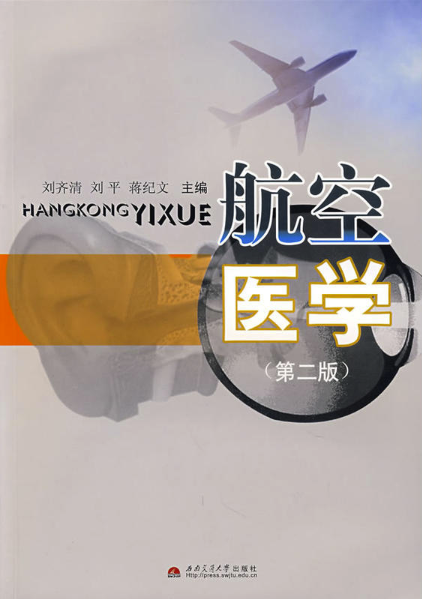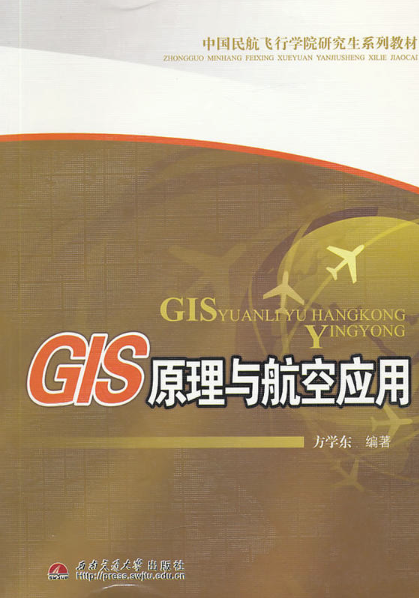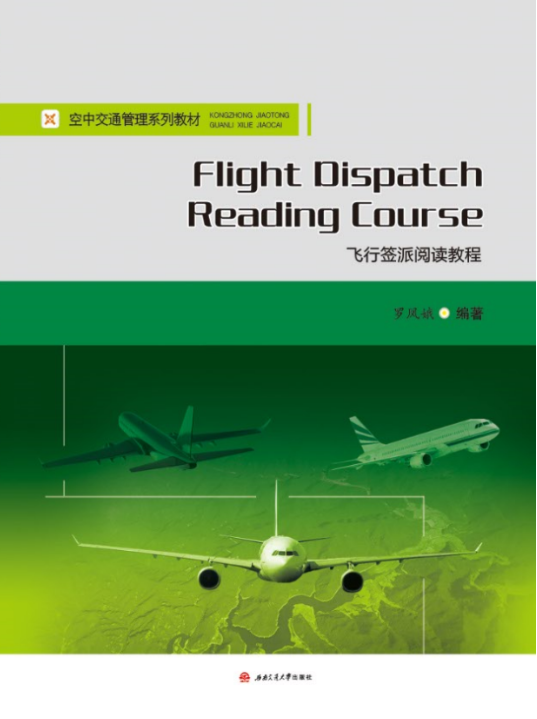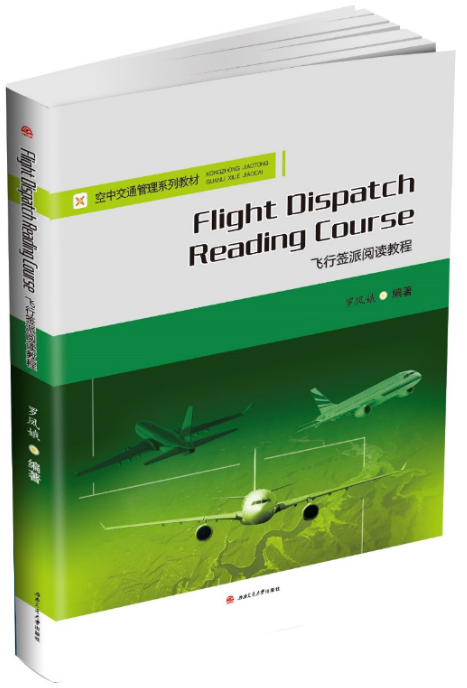-
 航空医学(第二版)
航空医学(第二版)作者:刘齐清
健康教育是学校教育的重要组成部分,它对于改善学生的知识结构,提高学生的综合素质,有着十分重要的意义。
《航空医学》是为适合我院学生的专业特点,参照国内普通高校《大学生健康教育》教材、国外飞行学院航空医学教育教材的相关内容以及教育部和民航总局的有关文件精神,在我院2003年版《航空医学》基础上改编修订的,它与《航空救护》一起,成为适合我院飞行技术专业、空乘旅游专业学生健康教育的配套教材。
本教材的改编、修订,得到了中国民航飞行学院教材工作委员会、中国民航飞行学院卫生行政部门的大力支持,中国民航飞行学院医院航空医学教研室的各位任课教师对本教材的改编提出了建设性的意见,在此一并表示感谢。
尽管教材的编著者做了大量的工作,付出了艰辛的劳动,但由于编撰时间和编著者的知识水平有限,教材中的缺点错误在所难免,希望广大师生及其他读者批评指正,以利于今后的重新修订,使本教材更加完善。 -
 空中交通管理基础(第2版)
空中交通管理基础(第2版)作者:潘卫军
本书系统讲述了空中交通服务的内容,除了专门讲述了航行情报和告警服务外,对空中交通管理也做了系统和全面的阐述。内容包括管制机构以及职能、航空器和飞行高度层、机场、空域、空中交通服务通信、目视和仪表飞行规则、空中交通流量管理、情报和告警服务、飞行的组织与实施、飞行和管制安全标准、机场管制、程序管制、雷达管制、军航飞行管制、事故调查等内容。对于军民航院校交通运输专业学院提高专业水平有积极意义,同时,也适合在职空中交通管制人员以及有关的航空运行、飞行保障人员学习和参考。
-
 GIS原理与航空应用
GIS原理与航空应用作者:方学东
本书为中国民航飞行学院研究课程建设项目“GIS原理与航空应用”的研究成果之一,主要介绍了GIS的基本概念、组成、主要功能、地球坐标系与地图,GIS数据的层次模型、关系模型和面向对象数据模型,空间数据库的设计,GIS系统的空间查询、量算、分析等功能及其算法等内容。
图书分类
Book classification- 本书为教材,考虑到飞行签派工作的综合性、交叉性和动态性等特点,吸收国内外同类教材的经验与优点,结合实践和案例,系统介绍了飞行签派的基本理论和方法、航空公司业务控制等知识。本书根据CCAR-121部《大型飞机公共航空运输承运人运行合格审定规则》和航空公司相关手册规章编写,既可作为交通运输专业飞行签派方向的专业教材,也可作为民航其他专业和航空公司运行控制人员的参考用书。本书作为第一本飞行签派方向的全英...查看更多
- PREFACE
Flight Dispatch Reading Course is a professional textbook which contains dispatch information for both theoretical&nbs...查看更多
- General
A flight dispatcher is a person responsible for planning and monitoring the progress of an aircraft journey....查看更多
-
Chapter 1 Background 1
1.1 History of Dispatch 2
1.2 Dispatcher Occupation Introduction 5
Chapter...查看更多 - 罗凤娥,中国民航飞行学院航空运行教授,研究生导师,持有CAAC/FAA飞行签派员执照。主要研究领域为航空公司运行管理及安全。曾赴瑞典、美国、德国、法国、比利时等培训交流,并发表论文40余篇





